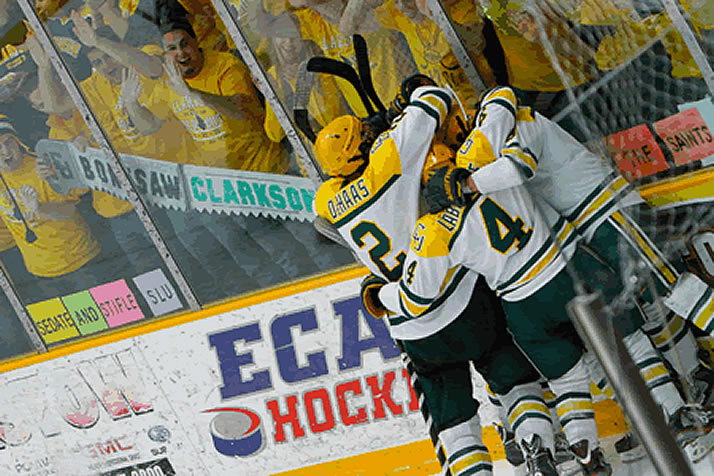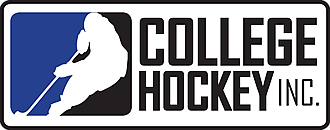Thursday, December 19, 2013
4 Ways to Use Twitter in Recruiting
How social media can be a positive force as prospects navigate the recruiting process.

By Nate Ewell
Most advice teenagers hear about Twitter and other social media outlets focus on what not to do – what not to say or who not to follow.
This article isn’t like that.
Instead of getting scared off by the dangers of social media, a savvy young hockey player can use it to their advantage. Whether you are gathering information, promoting yourself or communicating with coaches, social media can be a useful tool throughout the recruiting process.
With that in mind, here are four important ways a prospective college hockey player can use social media networks, specifically Twitter, to help the recruiting process.
Research
Want to learn more about a school, a program, or a coach? There are likely Twitter accounts for each. College Hockey Inc. maintains lists of Twitter accounts for each Division I school and the Division I coaches who are active on twitter.
“You can get a really nice sense for how a program is run and what its culture is like,” said Princeton assistant coach Greg Gardner (@coachgards on Twitter). “For a recruit, they can see if that coach is someone you would want to play for for four years.”
A team account, which may be run by a coach, PR person, or student assistant, can provide insight into a program’s schedule during the week and an easy way to follow each weekend’s results. Coaches often provide a glimpse of their coaching style and expectations. A general university account can also give you a sense of the overall campus environment.
Look inside
If a specific program interests you, a few more follows can give prospective players even more insight. Players are the best source of getting honest, unvarnished opinions – while most teams educate players on how to use Twitter, their posts will offer more insight than any recruiting brochure.
Posts about practice, academic demands and campus social life can reveal more than you might learn even on a recruiting visit.
“When we recruit a kid we will talk about the culture of our program,” said Bowling Green assistant coach Ty Eigner (@TyEigner on twitter). “Now they have a chance to follow our players and see that first-hand. We have a bunch of great kids and I think what they tweet matches the culture we describe. If it didn’t, recruits might wonder, ‘What’s this program all about?’”
Others around the program may be worth following as well. Curious what the locker room looks like? More and more Division I equipment managers are on Twitter or Instagram, giving a behind-the-scenes look at life at the rink – at home and on the road.
Sell yourself
Any social media account should be an honest reflection of you, and that’s no different for a college hockey recruit.
Yes, that means avoiding the pitfalls you’ve probably been warned about elsewhere – don’t post anything offensive or that reflects poorly on you and your goals as a student-athlete.
Beyond avoiding negative comments, your social media account is an opportunity to accentuate the positives you would bring to a college program. Support your teammates, embrace hard work and development, and show where your priorities lie.
“As a coach it allows you, when you follow a kid, to sort of get to know him away from the rink,” Eigner said. “You can tell what their priorities are. It’s another way to do your due diligence.”
Communicate
NCAA rules can often be confusing, especially when it comes to coaches contacting prospective student-athletes. There are limits on when hockey coaches can begin contacting players (Jan. 1 of their Grade 10 year) and how often (varies by age).
When it comes to social media, however, it’s actually fairly simple. In Division I, if you and a coach follow each other on Twitter and you’re past the initial contact date of Jan. 1 of your Grade 10 year, you may send each other direct messages. Similarly coaches may communicate privately with recruits on facebook.
[Rules for Division III coaches are a little more complex: they can exchange facebook private messages and send direct messages on twitter. Division III coaches, however, cannot follow recruits on twitter, so recruits are not able to direct message coaches.]
To make it easier for coaches, be sure to include your Twitter account if you send out a hockey resume, and follow their accounts – that’s one way they may discover your interest in their program.
Many coaches, including Eigner, won’t follow prospective players until they have met them in person and begun the recruiting process. Others may be open to swapping messages earlier. In either case, that additional line of communication can help as you plan your next steps in your hockey career.
Be sure to follow @collegehockey for updates from around NCAA hockey and more recruiting tips.
